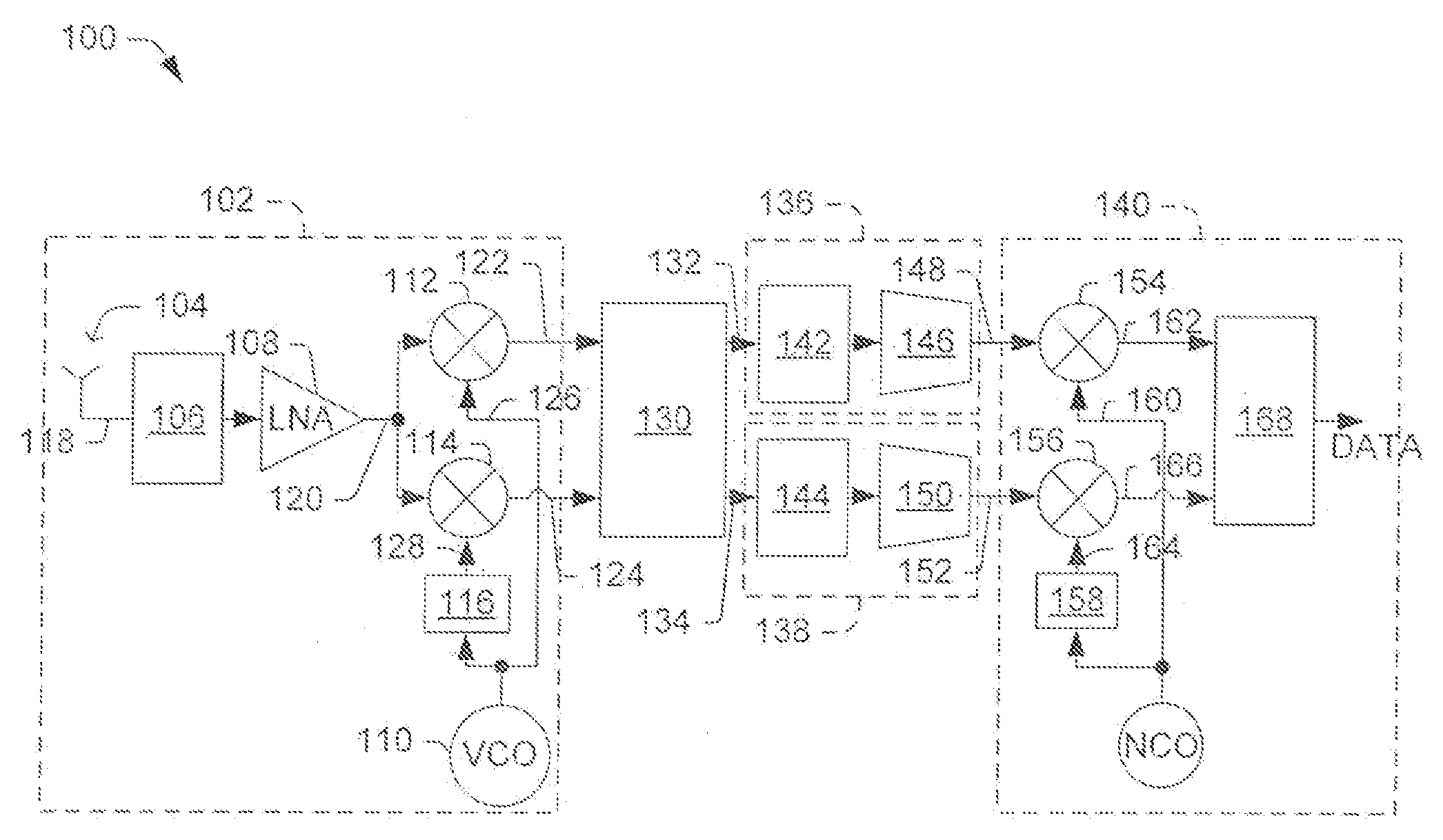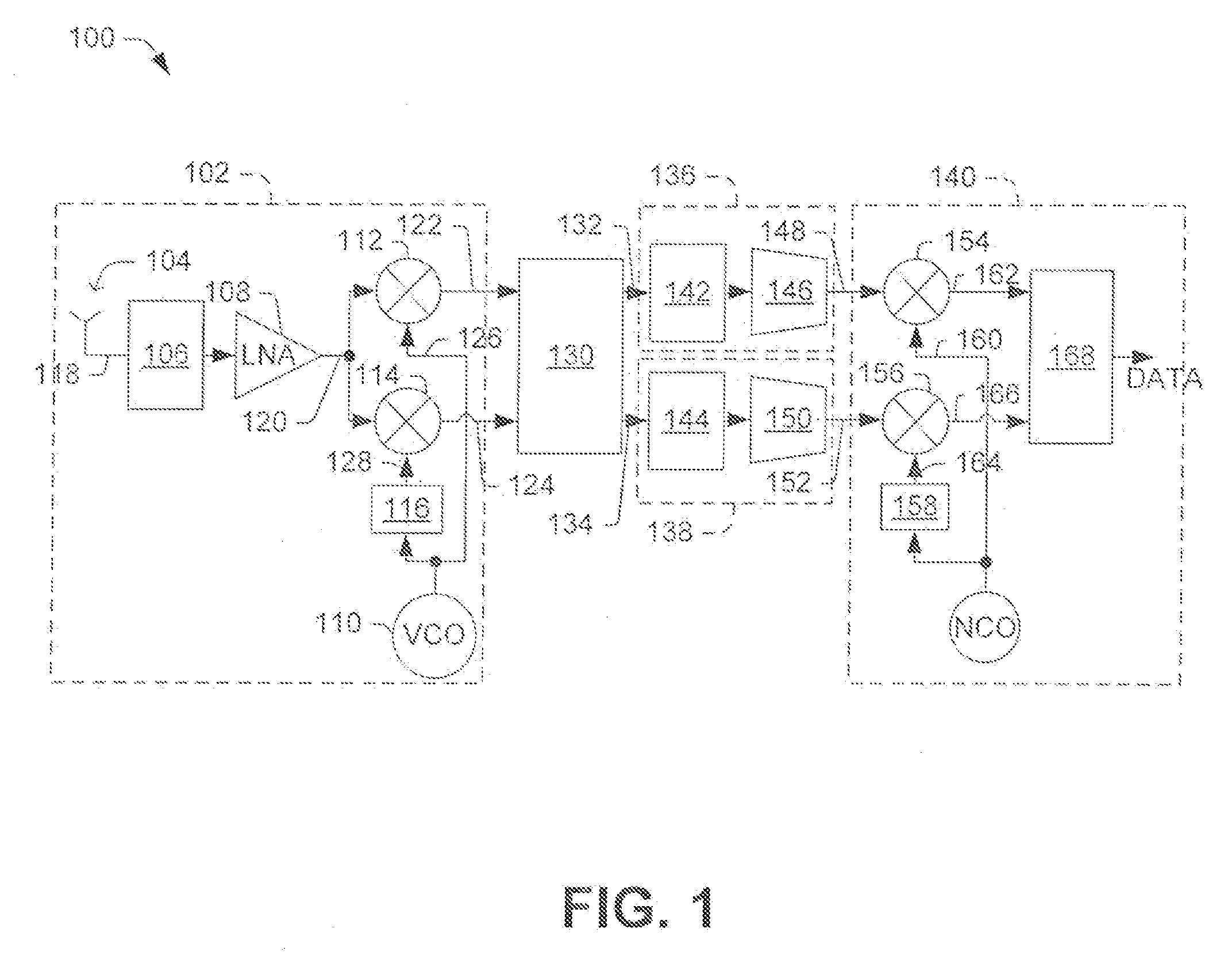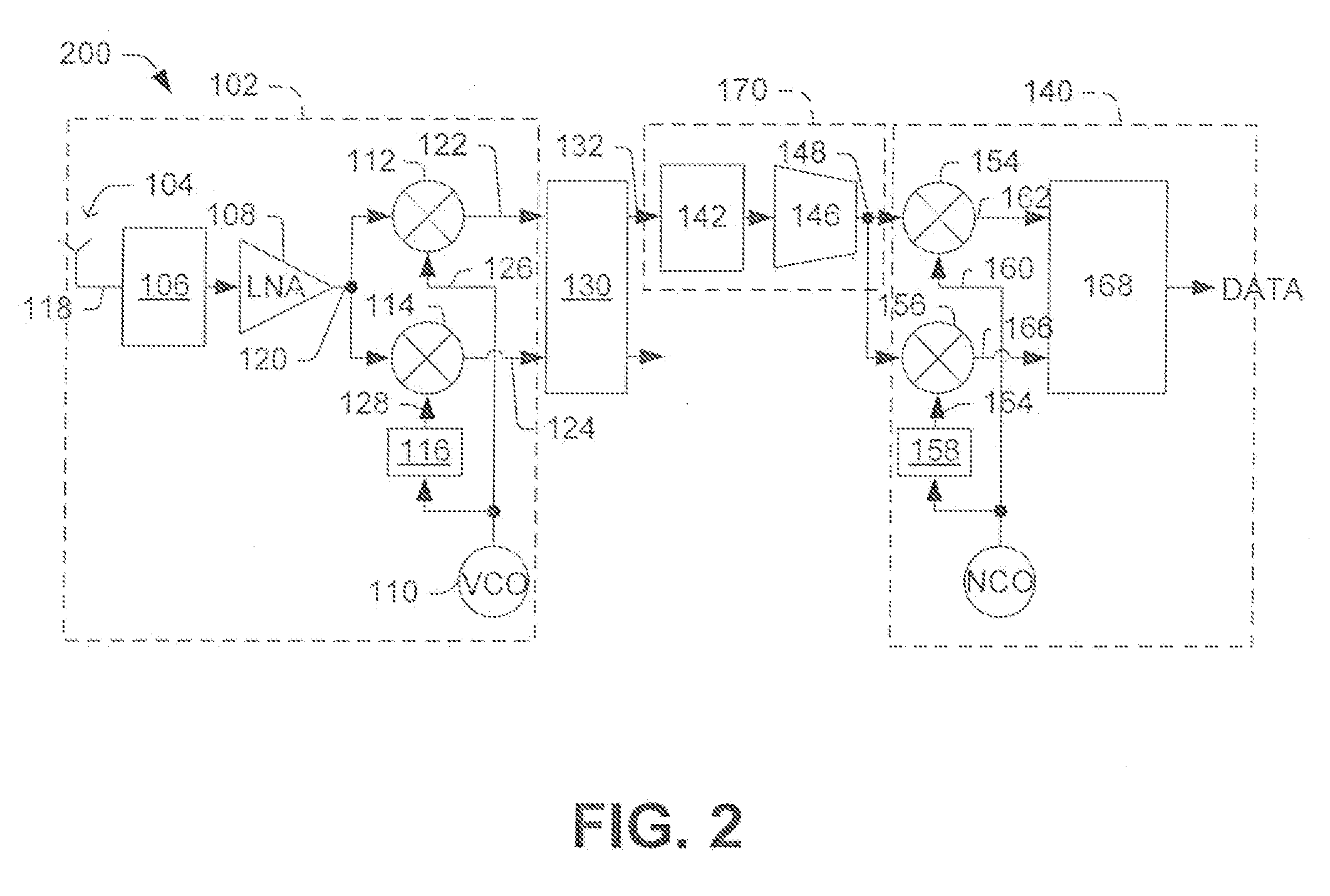Low intermediate frequency receiver
a receiver and low intermediate frequency technology, applied in the field of communication systems, can solve the problems of limiting the extent to which such receivers can be used in modern communication systems, reducing the component count, and limiting the footprint and cost of the chips
- Summary
- Abstract
- Description
- Claims
- Application Information
AI Technical Summary
Benefits of technology
Problems solved by technology
Method used
Image
Examples
Embodiment Construction
[0015]The present invention will now be described with respect to the accompanying drawings in which like numbered elements represent like parts. The figures and the accompanying description of the figures are provided for illustrative purposes and do not limit the scope of the claims in any way.
[0016]Referring to FIG. 1, one can see one embodiment of a low-intermediate frequency (low-IF) receiver 100. The low-IF receiver 100 includes an analog front end 102 with an I / Q demodulator structure. This analog front end 102 includes the following components: an antenna 104, a matching network 106, low-noise amplifier (LNA) 108, a voltage controlled generator (VCO) 110, two mixers (112, 114), and a 90° phase shift module 116.
[0017]During operation, the LNA 108 passes modulated IQ data received from the antenna 104 to the first and second mixers 112, 114, respectively. In essence, the first and second mixers 112, 114, respectively, perform signal multiplication and either up-convert or down...
PUM
 Login to View More
Login to View More Abstract
Description
Claims
Application Information
 Login to View More
Login to View More - R&D
- Intellectual Property
- Life Sciences
- Materials
- Tech Scout
- Unparalleled Data Quality
- Higher Quality Content
- 60% Fewer Hallucinations
Browse by: Latest US Patents, China's latest patents, Technical Efficacy Thesaurus, Application Domain, Technology Topic, Popular Technical Reports.
© 2025 PatSnap. All rights reserved.Legal|Privacy policy|Modern Slavery Act Transparency Statement|Sitemap|About US| Contact US: help@patsnap.com



